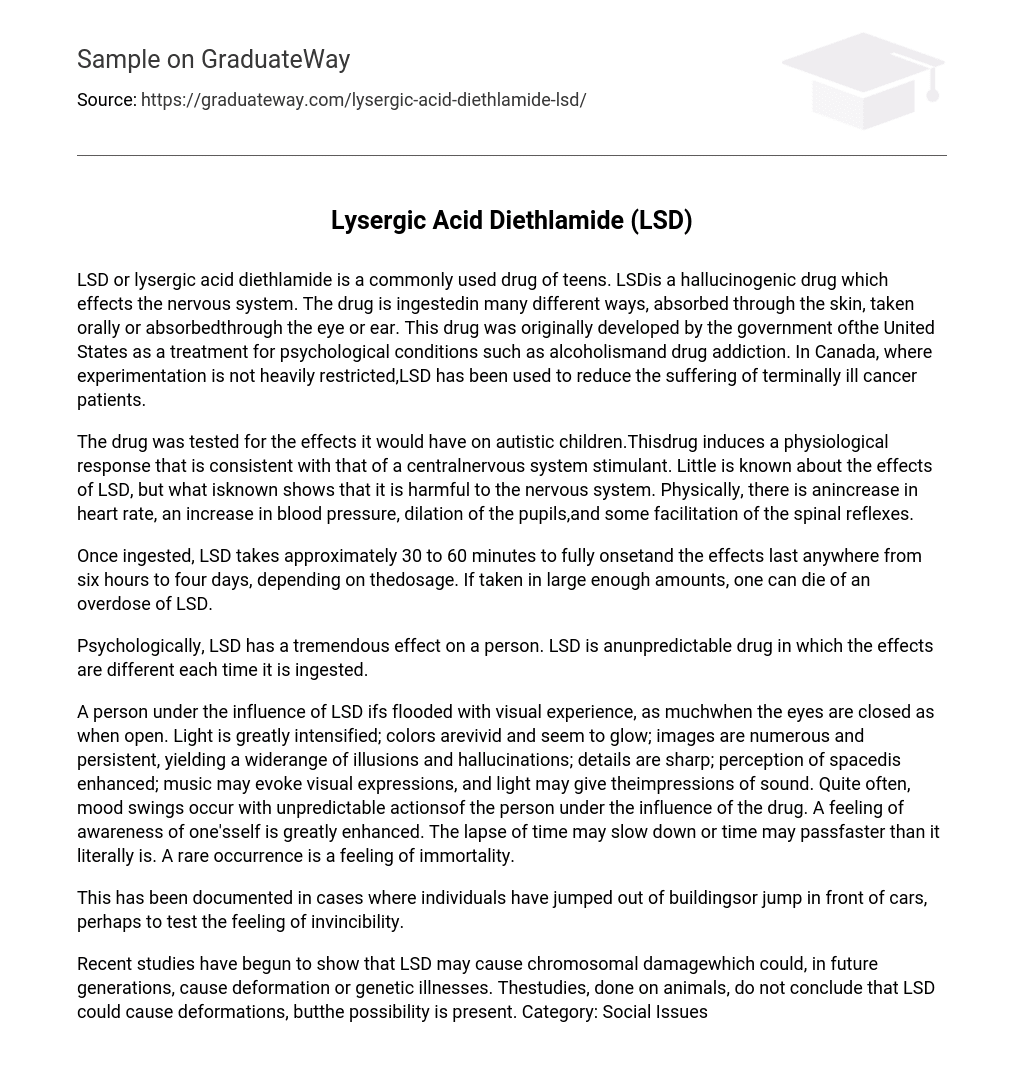LSD or lysergic acid diethlamide is a commonly used drug of teens. LSDis a hallucinogenic drug which effects the nervous system. The drug is ingestedin many different ways, absorbed through the skin, taken orally or absorbedthrough the eye or ear.
This drug was originally developed by the government ofthe United States as a treatment for psychological conditions such as alcoholismand drug addiction. In Canada, where experimentation is not heavily restricted,LSD has been used to reduce the suffering of terminally ill cancer patients.
The drug was tested for the effects it would have on autistic children.Thisdrug induces a physiological response that is consistent with that of a centralnervous system stimulant. Little is known about the effects of LSD, but what isknown shows that it is harmful to the nervous system. Physically, there is anincrease in heart rate, an increase in blood pressure, dilation of the pupils,and some facilitation of the spinal reflexes.
Once ingested, LSD takes approximately 30 to 60 minutes to fully onsetand the effects last anywhere from six hours to four days, depending on thedosage. If taken in large enough amounts, one can die of an overdose of LSD. Psychologically, LSD has a tremendous effect on a person. LSD is anunpredictable drug in which the effects are different each time it is ingested.
A person under the influence of LSD ifs flooded with visual experience, as muchwhen the eyes are closed as when open. Light is greatly intensified; colors arevivid and seem to glow; images are numerous and persistent, yielding a widerange of illusions and hallucinations; details are sharp; perception of spacedis enhanced; music may evoke visual expressions, and light may give theimpressions of sound. Quite often, mood swings occur with unpredictable actionsof the person under the influence of the drug. A feeling of awareness of one’sself is greatly enhanced.
The lapse of time may slow down or time may passfaster than it literally is. A rare occurrence is a feeling of immortality. This has been documented in cases where individuals have jumped out of buildingsor jump in front of cars, perhaps to test the feeling of invincibility.
Recent studies have begun to show that LSD may cause chromosomal damagewhich could, in future generations, cause deformation or genetic illnesses. Thestudies, done on animals, do not conclude that LSD could cause deformations, butthe possibility is present.





